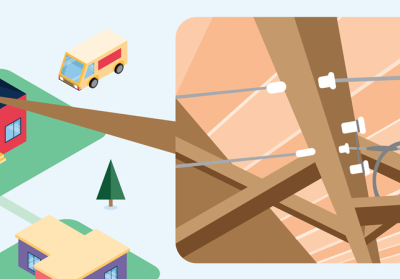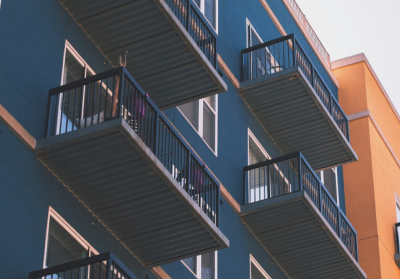The What and Why's of an Energy Audit
Every home is different and often have unique issues. The best way to find out answers to your home energy questions is to get an energy audit done on your home.
What is an energy audit?
During an energy audit, a trained energy expert collects and analyzes data on how your home uses energy.
Many utilities offer energy audits to their customers at a reduced cost as a way to help customers learn about their home and find ways to use less energy. What exactly is done during an audit can vary depending on what the utility offers and what your needs are. However, auditors will commonly perform the following tasks:
- Inspect your home’s interior and exterior
- Analyze insulation levels throughout the home
- Determine the age and efficiency of your heating and cooling equipment as well as your water heater
- Conduct combustion safety tests on your mechanical equipment
- Conduct a blower door test to see how much air your home loses through leaks
- Use an infrared camera to scan and document insulation levels (if possible or if included in the service)
Sometimes auditors can review your utility bills to aid their analysis of your energy usage. Some energy audit programs also install basic energy-saving measures during the audit, like LED light bulbs and water-saving aerators.
The appointment length can vary, but it usually takes around 2–3 hours.
Why should I get one?
Having an audit is always a great idea, especially if you have questions about your home like those listed below.
- Why are my energy bills high? What can I do to lower them?
- How can I lower my energy usage?
- What is causing my ice dams?
- Why do those mailed reports say I use more energy than my neighbors?
- My _____ room is really cold/drafty/uncomfortable and I am not sure why.
- I think I should do _____ (energy project), but I am not certain or I have some questions before I get started.
- I think I have a lot of energy efficiency projects to do, but I am not sure where to start.
- How can I lower my home’s carbon footprint?
In the age of Google, it is pretty easy to get basic energy questions answered simply by reading a few sources on the internet, such as this one! But Google can’t provide you answers based on what is happening specifically in your home. Energy auditors can give you answers tailored to your home, which will help you address specific problems and make better choices regarding your home’s energy performance.
Energy auditors are often part of a neutral third party organization, meaning they are not financially incentivized to make certain recommendations or convince you to undertake certain projects.
How much does an energy audit cost?
Costs vary by utility. Check with your gas or electric utility provider to see what options are available to you. Typically, energy audits in Minnesota cost less than $100, and some programs may even offer free or reduced audits.
What is the outcome of the audit?
Most auditors will provide you with a summary report that explains what they found as well as prioritized next steps. There will often be information about rebates in this document as well.
I had an audit and need help, who should I call?
If you have a question about your recent energy audit, contact the energy auditor who came to your home. You can also contact a CEE Energy Advisor. Our Advisors can help you review your audit report, and answer questions about energy projects or contractor estimates. They’ll do their best to connect you to rebates and low-interest financing options as well.
What do infrared images tell me about my home?
Energy auditors often use an infrared camera as a diagnostic tool. The photos that the camera produces use color to show surface temperature differences. Generally there needs to be at least a 20 degree temperature difference between your house and the outside air temperature to take an effective photo, because the camera relies on the temperature contrast. When similar temperatures prevent the auditor from being able to use the infrared camera, the blower door test (pictured above) also helps identify leaky areas and drafts.
These differences in color often help the auditor pinpoint drafts or leaky areas of your home. In the example below, there is the regular (or “visible light”) photo of a door to the exterior alongside an infrared photo on the right. The dark purple spots in the infrared photo indicate that there are cold spots around two sides of the door. With a photo like this, the auditor would recommend that the customer add weatherstripping to the door and adjust the threshold at the bottom to make a more effective seal around and stop leaks and drafts.
While many customers are excited to see what the infrared camera finds around windows and doors, the photos also provide insight into what is happening inside wall cavities. In the second pair of images, we see a photo of a dropped soffit above some kitchen cabinets. The entire soffit is purple, which tells us that the soffit is colder than things around it, and would likely benefit from being insulated and air sealed. 

Questions about your home energy? Let's talk!



